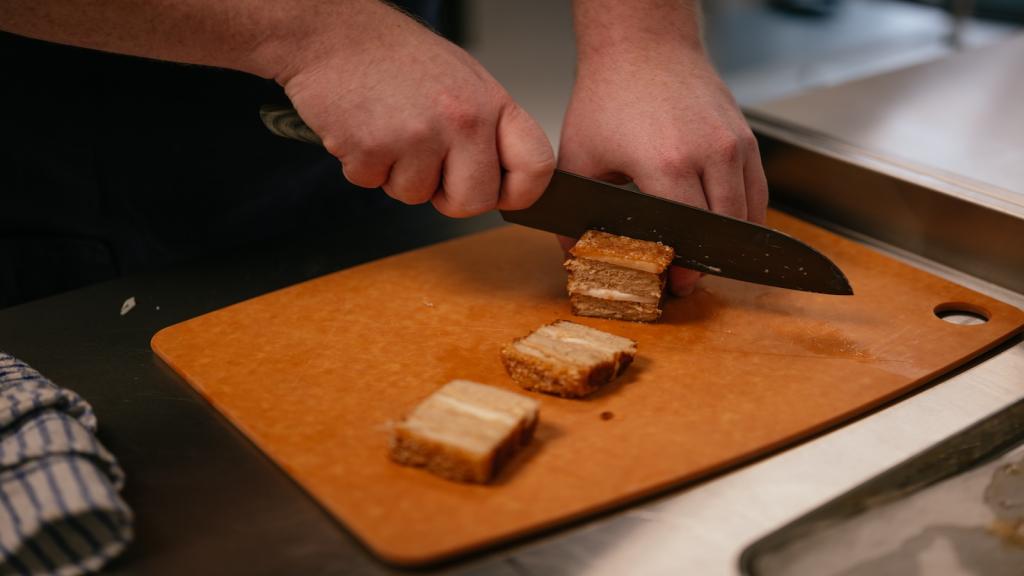Q. Dear Umbra,
With the cold weather coming on fast, I am curious if I’m losing too much heat from my house due to the doggie door in my laundry room. I like that my two large dogs can come and go, and I never have to worry about accidents inside. The doggie door is about 15 by 20 inches and has double plastic flaps, but they definitely do not completely seal off the opening to winter wind. I thought about hanging a heavy curtain in the entrance to the room, which perhaps would contain any heat loss. Thoughts?
And is it also possible that the dogs themselves give off enough heat to make up for the loss? I know I can tell the temperature difference in the bedroom when they are there.
Norman S.
Missoula, Montana
A. Dearest Norman,
A dog owner’s blessings are many: devoted canine companionship, fierce anti-burglar services, frequent licks in the face (if you’re into that sort of thing). But so, too, are his sacrifices: poop scooping, dog hair, frequent licks in the face (if you’re not into that sort of thing). And as winter approaches, add this one to the latter list: doggie doors and their effects on home energy efficiency. What’s a responsible owner of two independent, come-and-go pooches to do?
I’m afraid you already have your answer as to whether or not you’re losing heat as the weather turns, Norman. If the door flaps “definitely do not completely seal off the opening to winter wind,” then sadly, yes, you are. If wind can sneak in, then warm air can sneak out, forcing your heater to work harder to replace that loss. You might also be hemorrhaging heat through the plastic flaps themselves, as they’re not made of the heartiest material. Do you also feel drafts on laundry day? That’s another dead giveaway that something is amiss.
Just how much heat loss we’re talking depends on the quality of the doggie door and how well it fits into your people door or wall, so I can’t give you precise numbers. One estimate for a leaky cat door reported an owner might pay an extra $6.72 per month in heating costs, and that’s for a significantly smaller portal — so it’s possible your beast-sized opening could push your bills higher still. No matter the exact price, your pet door is a breach in your home’s thermal envelope, and that’s wasteful. You wouldn’t leave your windows cracked in the winter, right? You don’t want to let your furnace’s hard-earned heat pour outside.
Luckily, you can button up your home without sacrificing the convenience of the doggie door. I do think a heavy curtain in the doorway would help somewhat, but I’m betting you’ll do even better by upgrading the pet door itself.
If you’re the handy type, this turns out to be a simple and affordable DIY project. What you need is A) extra insulation and B) an airtight seal. Your double plastic flaps are a good step toward A already, because they help trap a pocket of insulating air between them. But that’s not enough without B. You can achieve this through weatherstripping your pet door, just as you would with any other door or window (now’s a great time to do the whole house!). Adding magnets to keep the flaps in place might also fortify them against stiff winds. For inspiration, check out this step-by-step guide to building a tightly sealed dog door.
On the other hand, if woodshop wasn’t your best course back in high school, you can always replace your old doggie door with a better, more efficient ready-made model. Options range from magnetically enhanced double-flap designs to this remarkable electronic door, which opens automatically when your pet (and only your pet) approaches and then closes up tightly behind, also thwarting burglars and marauding raccoons. That last one — which the manufacturer claims is airtight enough for passively heated homes — will run you upwards of $1,700, but perhaps it’s just the ticket for the pampered pooch who has everything.
No matter which option you choose, there is one surefire way to know just how airtight that doggie door is: a home energy audit, including a blower-door test that pinpoints air leaks. While these professional assessments of your house’s energy efficiency are probably a bit pricey if all you want is to test your dog door (they typically cost a few hundred bucks), if you haven’t already had an audit, you might want to get one done anyway. It’s an excellent first step toward weatherizing your entire home — and potentially saving big on both energy and cash.
As for the impact of your pups’ body heat? People certainly radiate excess warmth — to the point where some buildings harness it and use it to heat other buildings — so I don’t see why a couple of giant, warm-blooded dogs would be any different. But rather than using that as an excuse to leave your leaky pet door alone, do one better: Fix up the door, then turn down your thermostat a few degrees and let man’s best friend pick up the slack. Snuggling with a toasty pooch belongs right up there with the best blessings of dog ownership, after all.
Tail-waggingly,
Umbra



